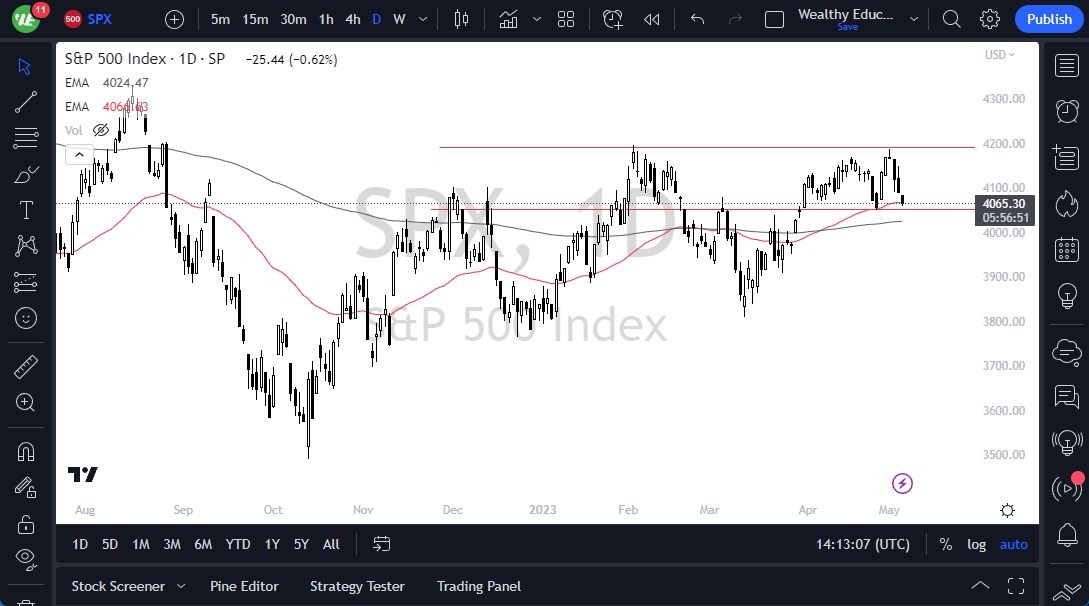- The S&P 500 fell again during Thursday's trading session as central banks around the world continue to tighten monetary policy.
- Wall Street is finally waking up to the idea that the economy may not be as strong as it had hoped.
- The lack of interest from central bankers in loosening monetary policy is not what Wall Street wants to see.
The market is currently consolidating, but a break below the low from last week could lead to a move down to the psychologically important 4000 level. If the market breaks down below this level, it could potentially reach the 3800 level, which is the bottom of the larger consolidation area. However, it is likely that the market has seen a lot of interest, and the 3800 level could potentially hold.
Despite this, Wall Street's job is to sell stocks to others, which means that there will be a narrative that encourages people to think about buying again. For example, the Fed Funds Futures are currently pricing in 150 basis points worth of interest rate cuts between now and the end of the year, which is highly unlikely. Even if it were true, it would indicate a serious economic situation that would not be good for stocks either. The overall negative cycle is likely to continue, although it is not expected to repeat the Great Financial Crisis.
If Wall Street can push the S&P 500 above 4200, it is possible that the market could move up to the 4300 level. However, smaller indices like the Russell 2000 shows that the S&P 500 is being distorted by just a handful of companies that are overweight in the calculation, such as Apple Inc.
Volatility Ahead
Traders need to remain cautious and vigilant during this period of market volatility. They should be prepared to act quickly, if necessary, but also recognize that the market may continue to be volatile for some time. Monitoring the market closely and staying informed about current events can help traders make more informed decisions.
Traders should also be aware of the impact of global economic trends and geopolitical events on the market's direction. For example, tensions between the United States and China could impact global growth and the market's direction. Staying informed about current events and monitoring the market closely can help traders navigate this uncertain period successfully.
Overall, the S&P 500 is likely to continue its negative cycle as central banks tighten monetary policy. Traders need to remain cautious and vigilant, recognizing that the market may continue to be volatile for some time. By staying informed and monitoring the market closely, traders can increase their chances of success during this uncertain period.
 Ready to trade the Forex S&P 500? We’ve made a list of the best CFD brokers worth trading with.
Ready to trade the Forex S&P 500? We’ve made a list of the best CFD brokers worth trading with.
